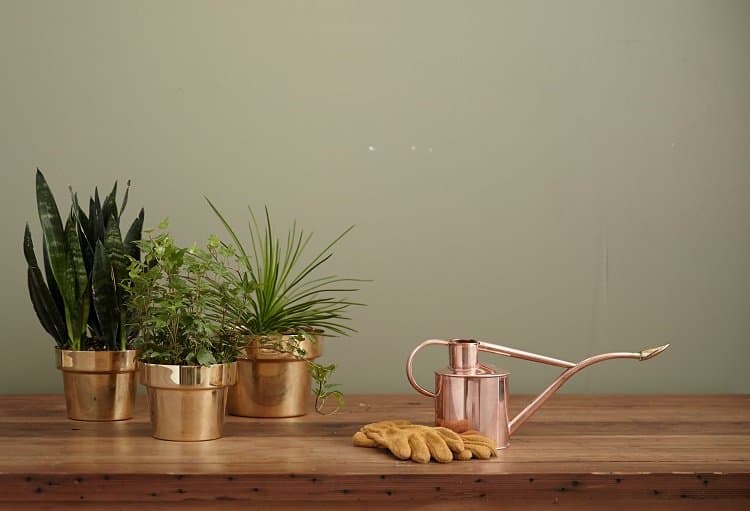I had three beautiful spider plants outside my room.
Ironically, spiders, the insects, make me squeamish. But the three plants were bought back in September 2018 when our family moved to our new home. Unfortunately, my hobbies kept me so indulged that I found the spiders dead in January 2019.
You can call me careless, and I won’t mind because that’s true.
How come I let the plants die? I made six quite obvious mistakes. Why didn’t I avoid them if they were obvious?
I had no game-plan, and maybe I’m not alone in this boat, maybe you also don’t have a plan when it comes to house plant care – not yet, that is.
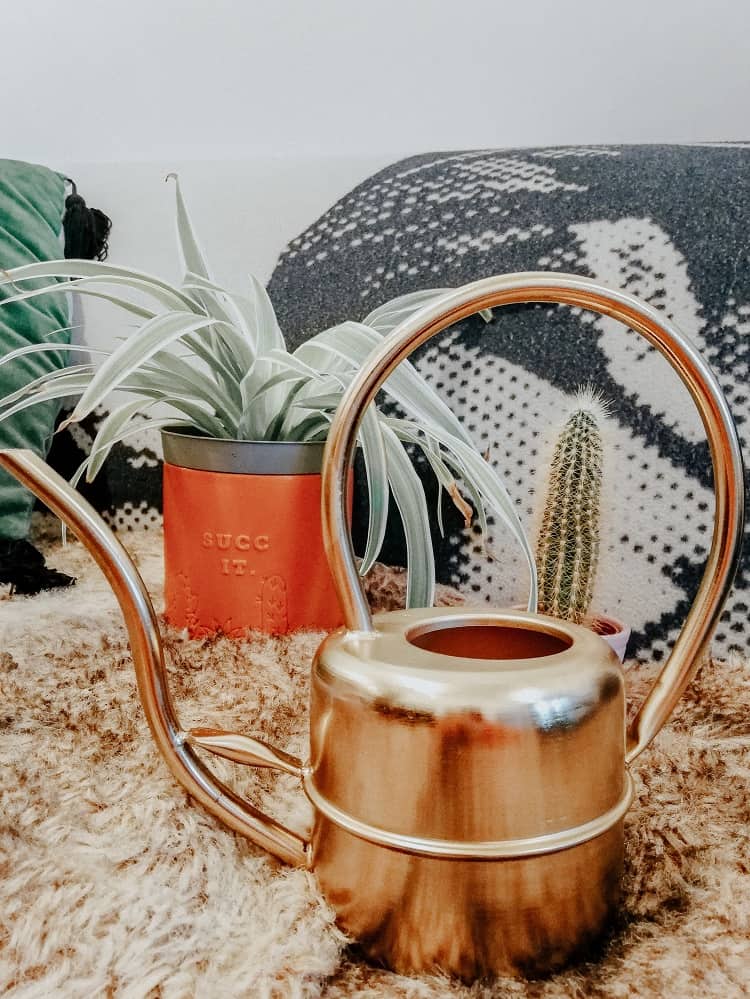
But don’t worry, in this article, I’ll give you 6 tips on how to keep your house plants alive – each one is a solution to the mistakes I made.
#1 Healthy houseplants need good-sized pots and fresh soil
Potting is where it all starts – the same ol’ story of laying the foundations right. There are two things that you must ensure with potting; sizing and repotting.
When you buy a plant, they usually come in tiny cute pots that take up less real estate and look handy.
But by not repotting them in a suitable and larger pot, you’re hindering their growth. As time passes, their roots grow to require more room, which you must ensure for them.
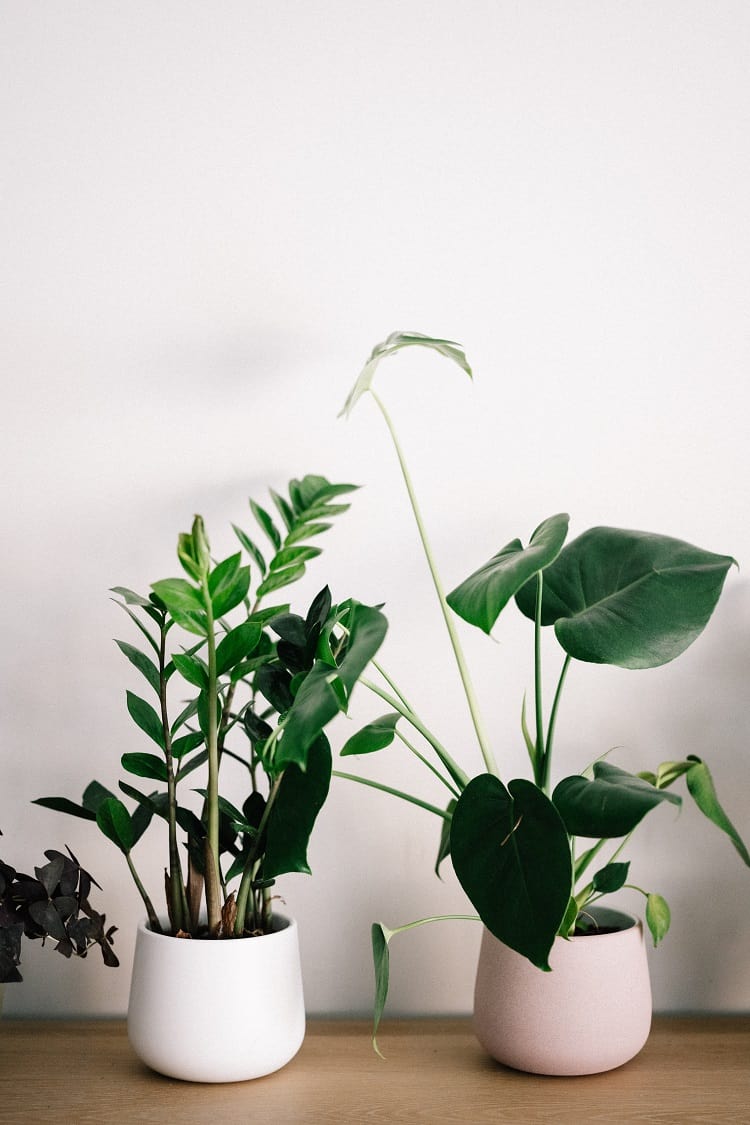
And we know that soil loses nutrients over time. Along with larger containers, fresh soil supplements plant growth by providing an influx of virgin minerals. This change keeps the plant from root-bounding, which again is a plant-killer.
And this is where I went wrong – I didn’t repot my spider plants even once. They lived in the same tiny pots they arrived in and soon lost to suffocation.
Though this wasn’t the sole or the leading cause, as you’ll read on, you’ll find more culprits in the story.
#2 A little sunshine goes a long way in house plant care
My theory is that a portmanteau fanatic in the 15th century shortened the word ‘pleasant’ to ‘plant’, and that’s how this living thing got its name.
As you already know, plants love the cool and pleasant spring sunshine more than anyone else, which is also why it’s their baby-blooming time of the year.
Give your plants some sunshine, even if they’re indoor ones; it’s as simple as that.
They might not require it, but they do appreciate it. My spider plants needed a mix of sun and fluorescent light that I failed to provide.
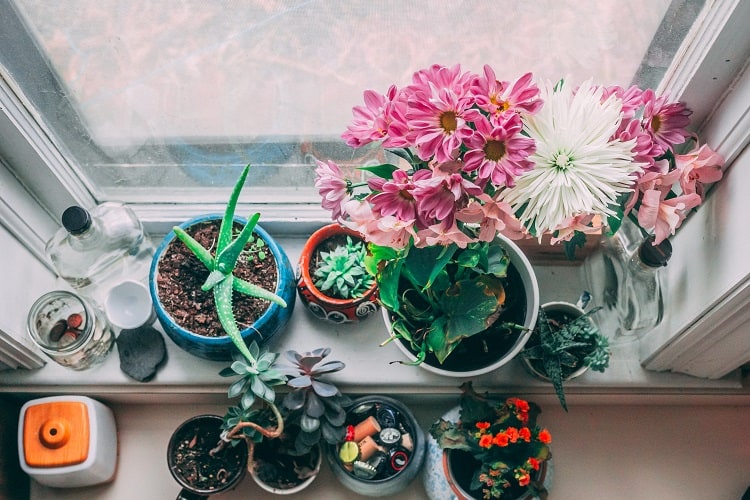
The best way around it is to study your plant’s sunlight requirements. Even if you find out that the plant needs zero sunlight, put them in a place where they’ll likely get a few minutes of sunshine daily.
The sunlight will help them grow taller and will minimize any risks of the plant’s sudden death.
#3 Watering house plants: Let it rain…
… but, occasionally. Like most plants, indoor plants need water as well.
The most common mistake we make is under-watering or over-watering them, and so, you should prevent these extremes.
Schedule your waterings weekly, if possible, to ensure that your plants neither have an excess nor a lack of water.
Here’s where I went wrong, too. For the first three weeks, I would water them daily before leaving for work. Then the next four weeks, I was lazier, and it became more of a burden than passion.
And a couple of more weeks down the lane, I entirely quit all my efforts. For the three good months that followed after that, I didn’t water them once, ultimately killing my indoor plants.
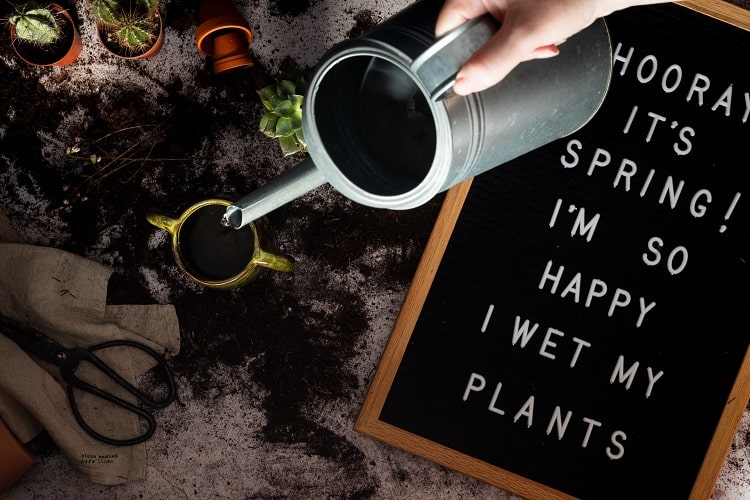
What did I do to revive them? That’s a story for later. Let’s discuss how to prevent this.
As I said, you have to create a watering schedule, but what would it be based on?
The plant’s requirements and soil’s conditions – know thy plant. In fact, reading up about watering requirements should be the very first thing on your list when looking up how to take care of indoor plants.
If your plant requires more water, make sure the soil is humid. If it doesn’t need much (like the spider plant), make sure you let the soil dry after every session and then re-water.
Here’s a useful, comprehensive guide on how much water your plants might need — and how often you should water them.
#4 Creepy-crawlies not allowed
Ever grown vegetables indoors (yes, you can) and found clumsy little bugs bugging around? Of course, plants and vegetables themselves attract these sneaky guests, and it’s your headache to get rid of them.
Keeping your lawn clean and pest-free is difficult, but one benefit of moving the party of growing something indoors is pest control. You’re still likely to encounter insects, but not animals (rabbits, squirrels, etc.), which solves half the problems.
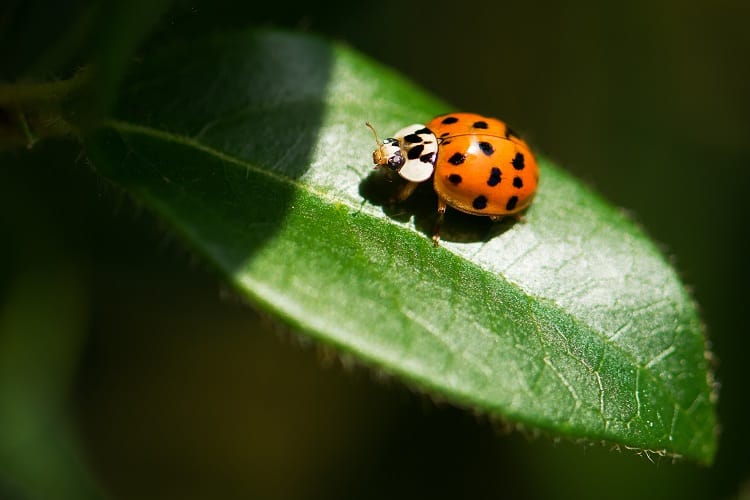
The trick to keeping your plants alive indoors besides using water and sunlight is maintaining a pest-free environment at all times.
If your plants get infested, the infestation multiplies, which can be highly undesirable. And it’s not always easy to spot the little bugs that are giving your plants a bad time.
For my spider plants it got real bad. Lack of watering caused dustiness and dryness, which then rewarded me with wonderfully infested spider plant triplets. When I first discovered the infestation, I won’t lie: it scared the bejesus out of me.
This was also the point when I realized my plants are as good as dead. Here’s how I revived them:
- Right off the bat, I repotted the plant into a new container with fresh soil (the new pot must have a drainage hole).
- Then, I applied an insecticide (organic or inorganic) and put the plant in the open air to bring it back later, once the chemical had faded.
- I applied insecticide periodically and kept watering my plant, which gradually eliminated the infestation.
Important: Do not keep the plants near your pets when you’re using pesticides/insecticides, as they often contain toxic chemicals.
Easy, right? Once you’ve taken care of the infestation, make sure you follow all the tips here to keep your house plants alive throughout the year.
#5 Keep your house plants out of your dog or cat’s reach
Though your human babies might not show much interest in your greenery – your fur babies sure will. If you’ve got pets around, keep an eye out for them no matter what their dietary habits are.
The often bored domestic dogs/cats turn on these plants for amusement and end up destroying them. Observe your pets and if they show an interest in your plants, try placing them out of their reach.
What can you do to prevent it? Here’s what I do.
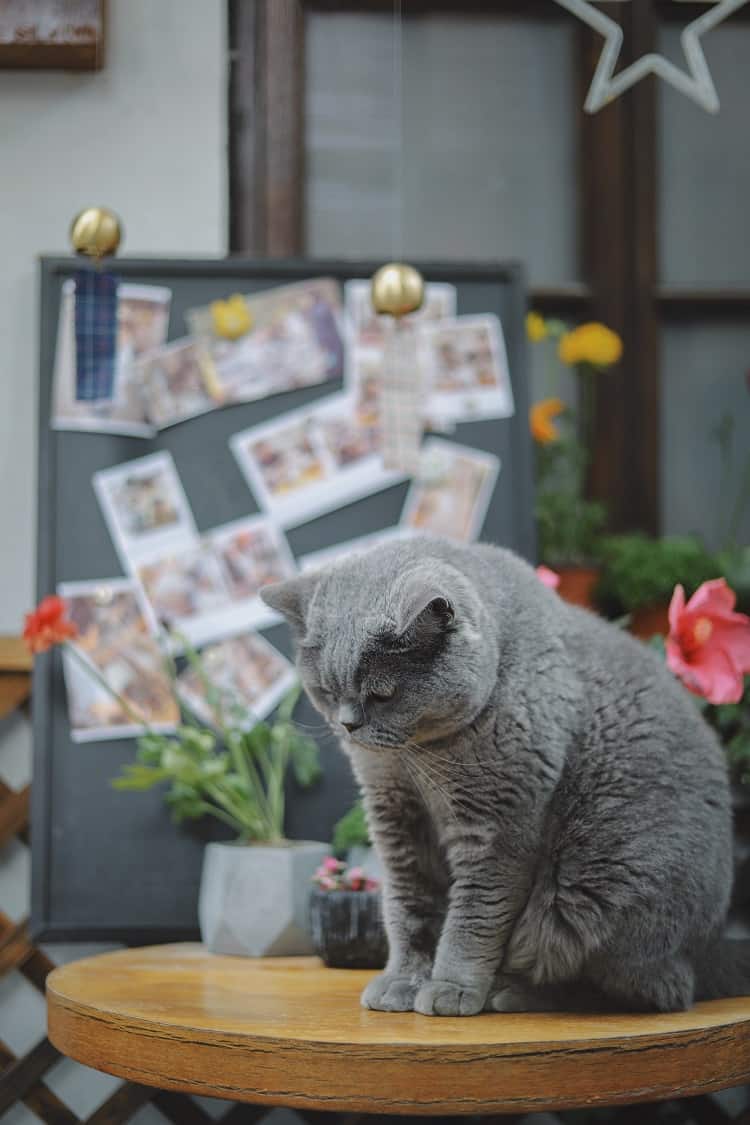
Back in October, our, then kitten, Mickey did me an absolute favor by ripping off one of the spider’s legs – he chewed them off.
But since this was very early in the indoor plant journey, it didn’t take the plant long to recover.
Once spidey had recovered, I sprayed citronella oil on the plant. Did Mickey ever look back at it? No, citronella works like a charm.
#6 House plant care 101: Prepper is the new sexy
So, the question is: if I knew what was happening all along, why didn’t I stop it?
See, having a green thumb is not luck; it’s a skill. In his book, Josh Kaufman suggests that keeping your essential tools ready is paramount when acquiring a new skill. If you don’t, you’ll be spending a ton of time collecting them every time you need to practice.
Here’s what happened to me: I had no gardening kit.
Every time I felt the need to groom my plants, lethargy took me over as the thought of collecting essentials followed up. And then came the day I learned about the infestation.
I was forced out of bed – it was do-or-die for me, so I collected the tools and got the job done.
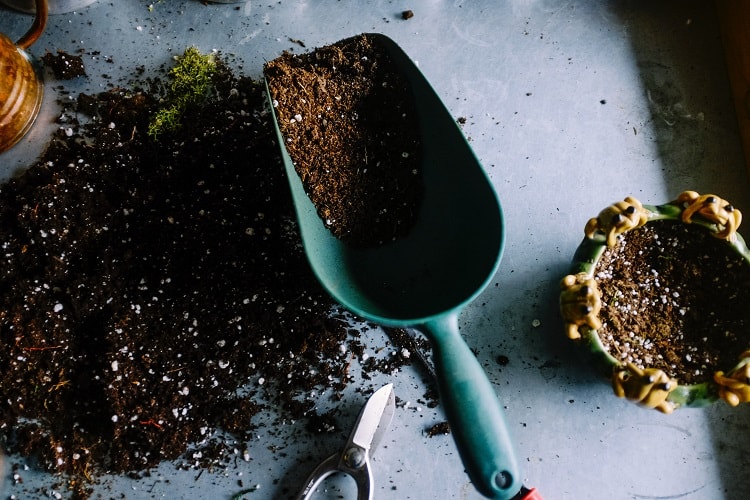
Always have your gardening kit at your disposal. Keep it somewhere near your plants but safely away from your pets.
This way, whenever you’ll see there’s some trimming or spraying that your plants need, you’ll get it done quickly without much thought.
And similarly, schedule your watering for every couple of days, depending on your plant’s requirements. Not only will this constantly refresh you, but your house would also be a lovely place to hang around, unlike mine.
OK, Bloomer
Did you learn from my mistakes?
If you maintain them well, indoor plants make excellent home decorations. But I guess at one point, we simply start treating them as artificials until they spoil and droop down.
You can keep digging for zero-maintenance plants, but remember that water, sunlight, space, and protection are basic life necessities that all living things need, including plants.
It’s nothing hard at all – follow my actionable tips, and keep your house plants alive!
More helpful tips
How to Make Your Home Cat-Friendly
Here’s Everything You Need to Set Up a Meditation Corner in Your House
How to Add a Touch of Luxury to Your Home without a Costly Renovation
Kitchen Cleanup Checklist: A Daily, Weekly, and Monthly Breakdown of Tasks


